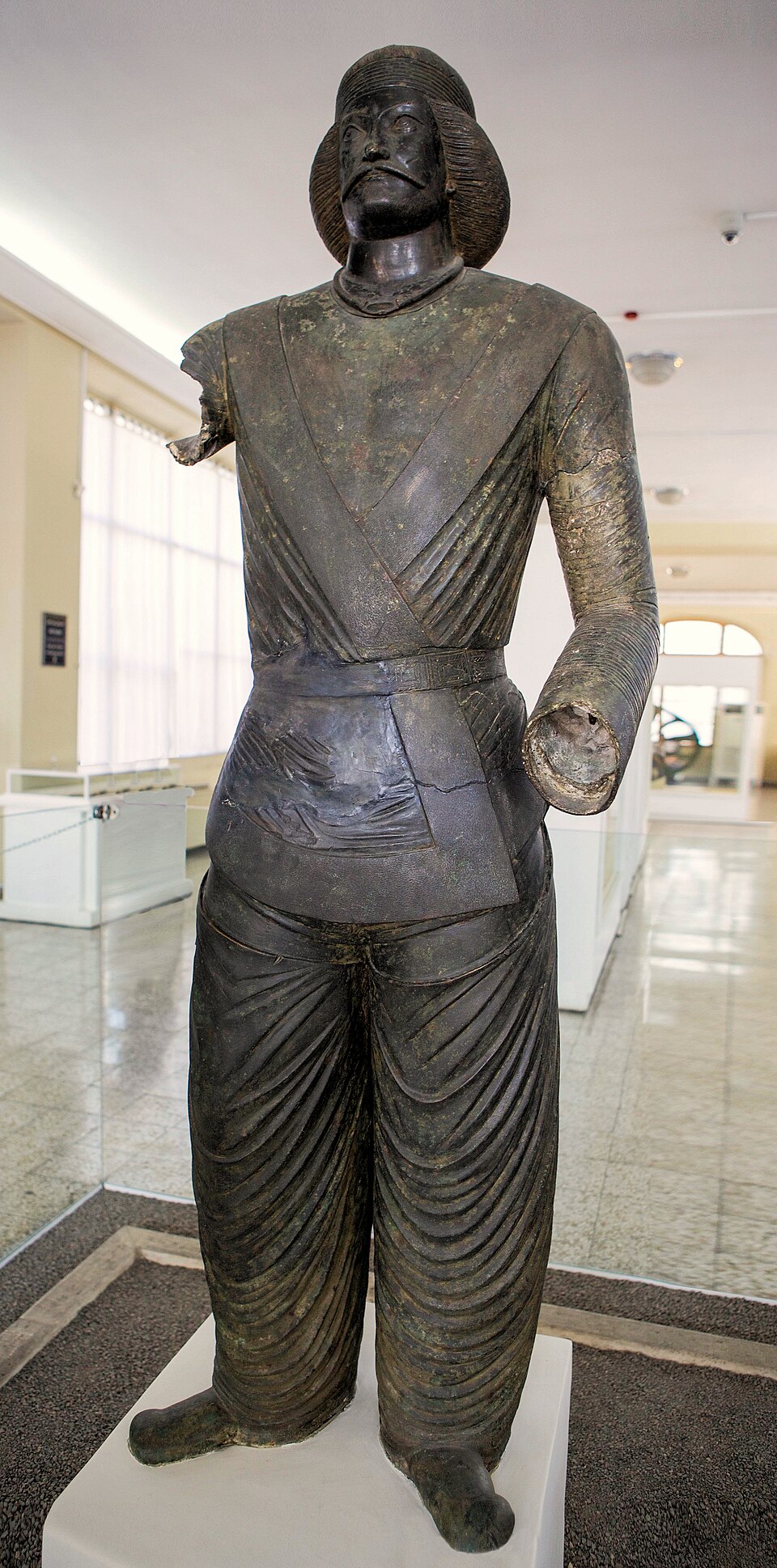Clothing/Costume
Scythian clothing tends to fall into one of two major categories:
- Distinctly “feminine” clothing, evidenced by garments like skirts found in some women’s burials and in some depictions of Scythian women (or priestesses, or goddesses) wearing such garments.
- Gender-neutral clothing suitable for a commonly mounted nomadic or semi-nomadic group, with Greek authors being confused about the apparent gender of trouser-wearing barbarians—especially given that women as well as men joined in combat.
Materials
The majority of evidence we have for clothing materials comes from the Altai and Taklamakan regions where environmental conditions allowed for preservation of organic materials.
Otherwise, Herodotus talks very briefly about some Pontic Scythian clothing details.
Scythian cultures appear to have, from that available evidence, primarily made clothing from:
- Leather
- Fur
- Wool
- Felt
- Silk
- Hemp
Garments
Caftans
While speculated patterns may vary, the caftan (an overgarment that opens in the front) appears to be the most ubiquitous clothing item in Scythian art.
Pontic-region caftans are often represented with what appears to be an angled front hem whose end (near the front opening) is longer than the side.
Pazyryk-region caftans tend to have “straighter” hems. One caftan in particular resembles a tuxedo coat with a long tail.
It can often be difficult to determine whether most caftans were held in place by a belt or whether there was some sort of closure system. At least one of the Pazyryk caftans has a pair of cloth ties attached to the front.
A cast bronze statue of a Parthian prince depicts a relatively “open” caftan that appears to be held only by the belt. The figure also wears a torc and very baggy pants.
Footwear
Headwear
Shirts
Only a few shirts are preserved, and these come from the Altai and Taklamakan regions. They were made of silk and linen/hemp and have seams and hem trimmed with red fabric/thread.
Skirts
Several skirts (or pieces of skirts) have been preserved from Altai and Taklamakan finds. These tend to be constructed/decorated in tubes of tall horizontal stripes that were collected at the waist (or under the breasts) with a cloth belt.
Some skirts also have significant gathered pleating near the hem.
Decorations
A number of extent garments (and representations of garments in various depictions) were elaborately embellished, whether with decorative plaques, applique, embroidery, or trims.
Plaques
Metal plaques of various shapes, sizes, and decorative patterns/images, sewn to clothing or attached to leather belts (or other garments/items), are frequently found in Scythian burials.
These might have been cast or made using chasing/repousse techniques.
Altai-region burials also sometimes have wooden plaques—some gilded with foil—as well as, or instead of, metal plaques.
